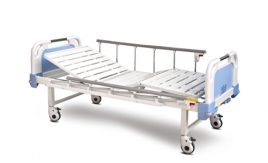Calculating bed occupancy and risk – week by week variation
Week by week variation. Part 2 of a 7-part series on bed occupancy.
Filter blog posts
You can filter out our blog posts below by a category relevant to yourself.

Week by week variation. Part 2 of a 7-part series on bed occupancy.

...and start talking about the risk of running out of beds. The first in a 7-part series on bed occupancy.

The waiting list should be shrinking at this time of year, but it isn't. In better news, the number of one year waiters is coming down.

How to crank out your 2019-20 plans quickly using Gooroo Planner

The waiting list isn't shrinking much this autumn. So there is little chance of holding the waiting list steady in 2018-19, as the planning guidance intended.

In financial terms, yes. But capacity may be more difficult. The onus is now on Health Boards to come up with realistic plans that make good use of the new money available.

Waiting times didn't get significantly worse in September, and some indicators improved. But it's still going to be tough to stop the waiting list from growing this financial year.

If you have automated your demand and capacity planning using the Gooroo Planner API, then you'll want to download this upgrade.

A larger waiting list, more patients over 18 weeks, and rising waiting times, all fuelled by a low elective admission rate. There is little to cheer about in August's RTT statistics.

New techniques reveal how the risk of bed crisis depends on non-elective bed occupancy. Here are some results from real NHS hospitals.